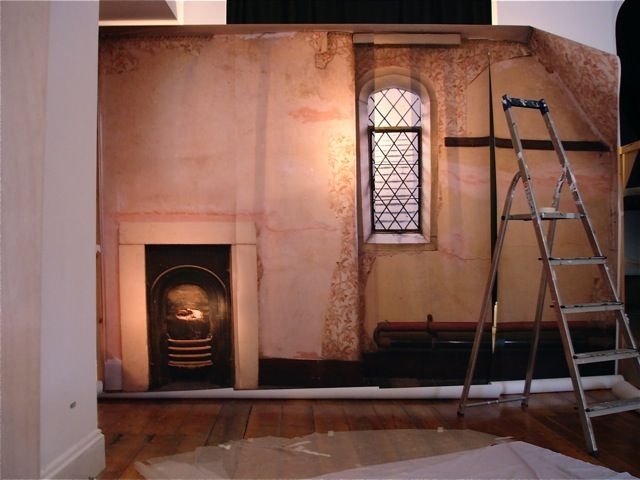Text on the Gatehouse

An email exchange between Manick Govinda and Lorrice Douglas exploring the installation, The Gatehouse.
The Gatehouse references a building used by BCA Gallery, about to change hands as the gallery moved to a new site: “The room appealed to me immediately. It was a kind of ‘spare room’; a room at the end of other rooms. It was in an attic and yet you had to walk down a staircase to get to it. Part domestic, part boiler room with pipes running across the walls, it was a mass of contradictions. The gallery had been using the room as a storage space for several years. I wanted to record it, to even preserve it in some way. I thought more people should be able to see its strangely layered interior, and so it became the subject of my exhibition”. Douglas saw it as a site of change and transition and thus set about recreating it as an installation, as a room sized set, using life-size photographic prints to the exact scale of the room where she decided to base herself during her residency.
The re-construction of the room walls as to-scale photographic walls, is suspended by a structure akin to a stage set, back-lit by naked light-bulbs. Illuminations foreground particular detail, drawing attention to the pipes, seams of wallpaper, joins, plaster, mildew, scribbles on walls over various eras. Douglas was interested in the point where Gothic Revival meets English Vernacular. “There was a kind of cosiness associated with architectural features such as gables and leaded windows. The boiler room pipes are an odd quirk, being accompanied by borders at the top of papered walls. If the viewer wished, they might find information with which to piece together some kind of narrative, as is true of any interior space. It is implied that the gatehouse keeper once resided in this room. We might wonder if he had papered the walls himself and what books he may have read. The production values of the piece are very specific; the thinnest of walls can take on a solidness with particular lighting, our minds fill in the gaps. We are presented with a particular period in time, the fabric of that era and some detailing. However, this is through something portable or ephemeral in nature. As in staging for a production these features can be quickly rolled up, shifted and put away. There is something about the re-framing of ‘the set’ (through a lens) which gives the photographs a more three dimensional quality.”
Douglas’s practice is research based; her approach is archival, collecting natural objects, relying on chance discoveries, and referencing popular culture of the modern era, but the formal photographic concerns of balance, colour, and presence that is hinted at through light – rather like a haunted presence – creates a hyper-real space. Throughout the space there are references to light and nature, as perceived from within an interior setting. The small monitor in the installation, plays an intermittent film like a son et lumiere broadcast flowing ethereally from a reverie. The visitor has a choice, to view the set as a formal composition, or to enter it and delve further.
This text is based on an email exchange between Manick Govinda and Lorrice Douglas.
